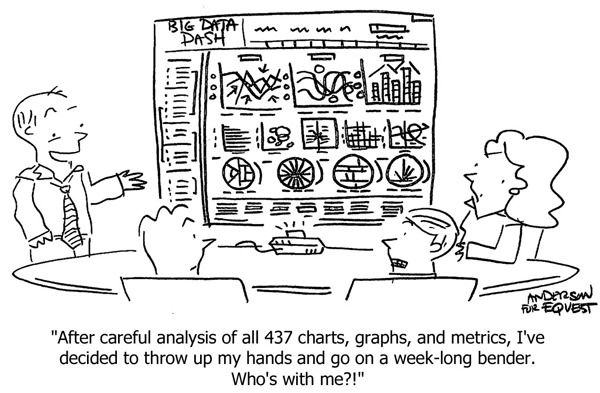Value is an attribute that defines how much something is worth. People tend to make decisions by assessing value, and business leaders should consider the business value of design.[1] McKinsey & Company, an international consulting firm conducted one of the largest worldwide studies ever tracking over 300 companies for more than five years to measure revenues and shareholder returns related to good design culture in companies[2]. Measuring design actions and collecting massive amounts of financial data showed the greatest correlation between design actions to financial gain. It actually shows the business value of design. They found that best design performers increase their revenues and shareholder returns at nearly twice the rate of their industry counterparts. Read the full report here. This extensive and rigorous study about the correlation of design investment and revenues has a peer only in InVision’s recent Design Maturity Model. Since businesses are primarily looking for results, i.e., value delivered, designers who can demonstrate they’re able to deliver value will stand out from the crowd. For designers, this calls for a different set of skills – from core design skills and requires a different approach that centres on enhancing soft skills and focusing on the client’s bottom line.
What is of value to businesses and brands?
Esquivel warns of a common misconception among designers that they only need to aim for visually appealing designs, and everything else will follow. Though aesthetics matter, it’s not the most critical factor when it comes to a business evaluating which design to implement. Many companies however still fail to conceptualize this. They have a painful awareness of the problems but to tackle them, need stronger commitment from business leaders over an extended period of time, possibly years and are best advised to hasten their start! Companies find it more valuable when design provides their customers solutions to an existing problem— eliminating pain-points, and reducing friction. In other words, clients value a designer’s problem-solving skills more than their ability to deliver great aesthetics in design. A shift in mindset is required—designers need to position themselves as problem-solvers, not “artists,” and business leaders need to show an implicit understanding of four themes that McKinsey researchers uncovered.
Four design actions to take
The four themes that formed the basis of the business value of design scoring system they used include:
1. Analytical leadership: Measure and drive design performance with the same rigor as revenues and costs.
2. User experience: Break down internal walls between physical, digital and service design.
3. Cross-functional talent: Make user-centric design everyone’s responsibility.
4. Continuous iteration: De-risk development by continually listening, testing and iterating with end-users.
Who calls the shots?
In order to increase the business value of design in any business, design must be at the top of management’s agenda. Leadership should assess and manage design based on measuring efficiency and value. Executive decisions must be made with an understanding of what really constitutes design and the tools and processes it wields. This then informs discussions on all forms of design.
For CEOs, spending time with customers and getting familiar with their needs first-hand provides not just valuable experience and knowledge for them, but also sets an example throughout the company by placing users first. C-Level management and other leadership should make conscious efforts to maintain this baseline level of customer understanding.
Unfortunately, design issues often get stuck at middle management level. Executives often make decisions based on gut feelings rather than rigorous metrics and benchmarking like they would in virtually every other segment of a business. Measurement holds the key to making good decisions and investing most effectively. Historically, measuring design performance and the business value of design has not come so easy. However there is now a burgeoning economy of tools designed for exactly that and business is slowly adapting them. Measuring customer satisfaction on-site with a simple survey or having regular usability assessments provide good examples. These metrics and processes should make up part of any design specification of the future. Designers need to realize the importance of involving the leadership level. They must also strive to provide information about their work to other parts of the business to increase transparency and facilitate decision making.

What Can Designers Do?
There is a well-known saying that may help illustrate this concept: “Show, don’t tell.” Anton Chekhov said: “Don’t tell me the moon is shining; show me the glint of light on broken glass.” Showing how a business problem will be solved and walking through previous design case studies —highlighting value delivered with key results—goes a long way in establishing trust and credibility.
Designers need to diagnose business problems first. Value-driven design understands the problem before suggesting a solution. They must look to show empathy, build rapport, and understand the root of the problem by asking great questions.
Creating a consistent design process can break down barriers and instill trust. Taking leaders and clients through a tried-and-true process they can understand will make them feel that a similar process will add value. It is sometimes necessary to understand how solutions were arrived at beyond a beautiful mock-up, by investing time in demonstrating a consistent process. This is a sure way for a designer to increase their perceived value.
Communicating the Business Value of Design
When it comes to communicating value-driven design, it can be challenging to articulate and convey it clearly. The right kind of value however need to be communicated with adequate clarity.
An effective strategy to communicate value is to listen to the client’s pain-points first, ask questions, and then suggest a path of discovery to arrive at workable solutions. Tuning into what will make the most significant impact on the pain-points will increase trust and convey the value of the design.

Increasing the Business Value of Design
Businesses are primarily looking for outcomes and expect a recognizable return on investment. Value-based design is an expansion of the design process that also considers specific business needs. The winning combination requires not only excellent design skills but also an ability to put a “business-oriented thinking” cap on and figure out where design can deliver value.

Design touches upon many different parts of a business. From the classic human-machine interaction to psychology and the development of new business models. As such adopting agile practices in the process can be fruitful. Learning, testing and iterating with users helps to reduce risks early on and to discover hidden opportunities in developing breakthrough products. This is a tangible business value of design. Keeping the user’s underlying needs in full view helps quickly identify when new needs emerge and increases the understanding of current ones.
Diversify your sources
According to McKinsey, the best results from continuous iteration come from combining multiple sources and types of information to base design decisions on. A case in point is combining qualitative research like ethnographic interviews with quantitative methods like large sample size surveys (conjoint analysis).
Combining market analytics like competitor research and patent scans with business concerns from the financial department is also essential. If these data points are not connected, the risk of executing otherwise great design work that ends up not generating revenue grows proportionally higher.
How to start measuring the ROI of design?
To magically transform your whole organization into a top-quartile, extra-high-McKinsey-Design-Score company and achieve those sweet Total Return to Shareholders and revenue numbers, McKinsey advises starting small on a single project. Using that as a pilot, and making a hard commitment to sticking to it. Ultimately, every organization must find its own way to adapt and learnings from trial-and-error constitute an essential part of that.
If you’re wondering where your company stands on the McKinsey design index, you can take a 30-minute survey that will tell you exactly that and download the original report as well. Go here.
[1] Andres Esquivel, Solutions, Not Art – The True Business Value of Design, July 2020, https://www.toptal.com/designers/web/business-value-of-design
[2] Attila Somos, What Is The Business Value of UX Design? March 2020, https://uxstudioteam.com/ux-blog/business-value-of-design/



